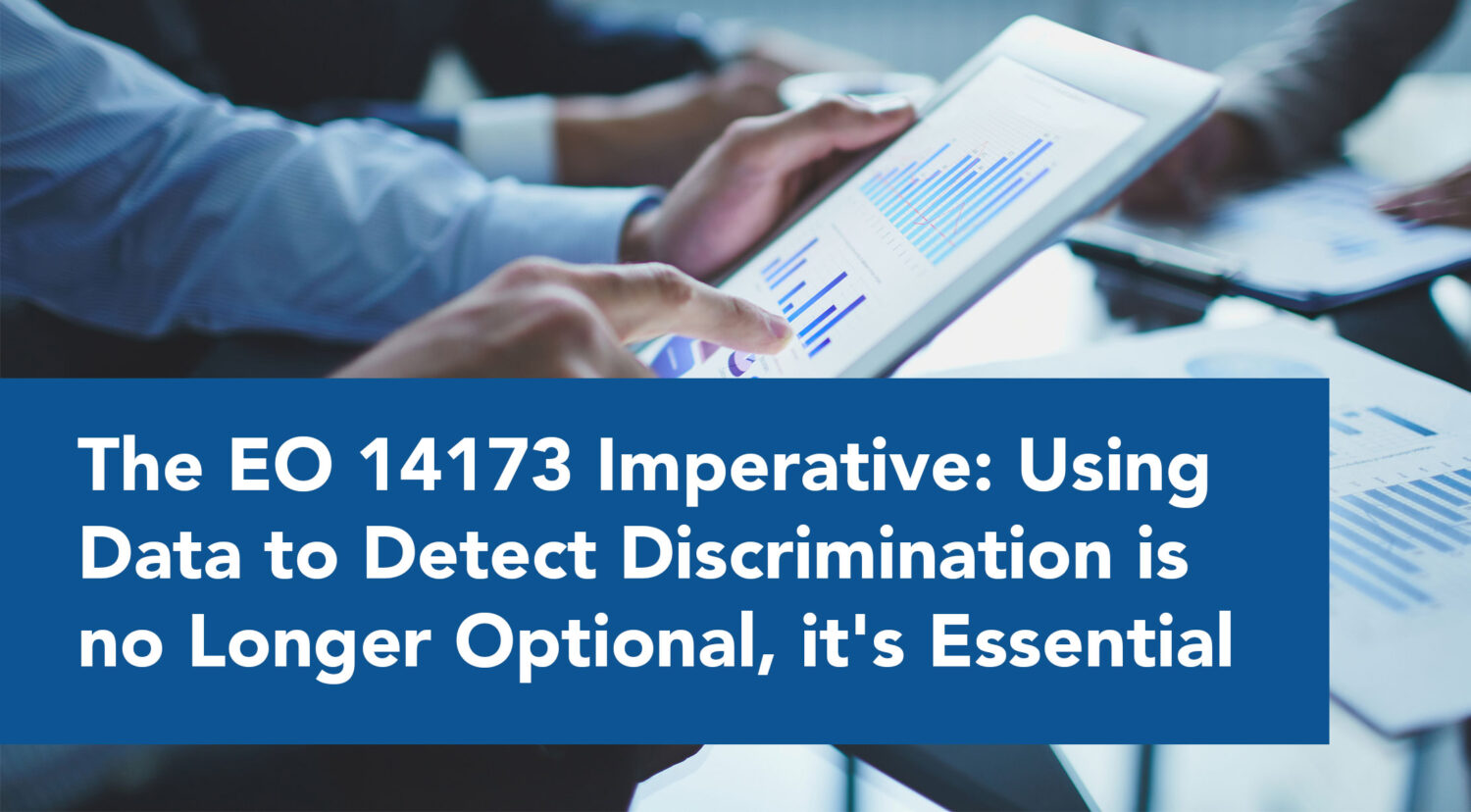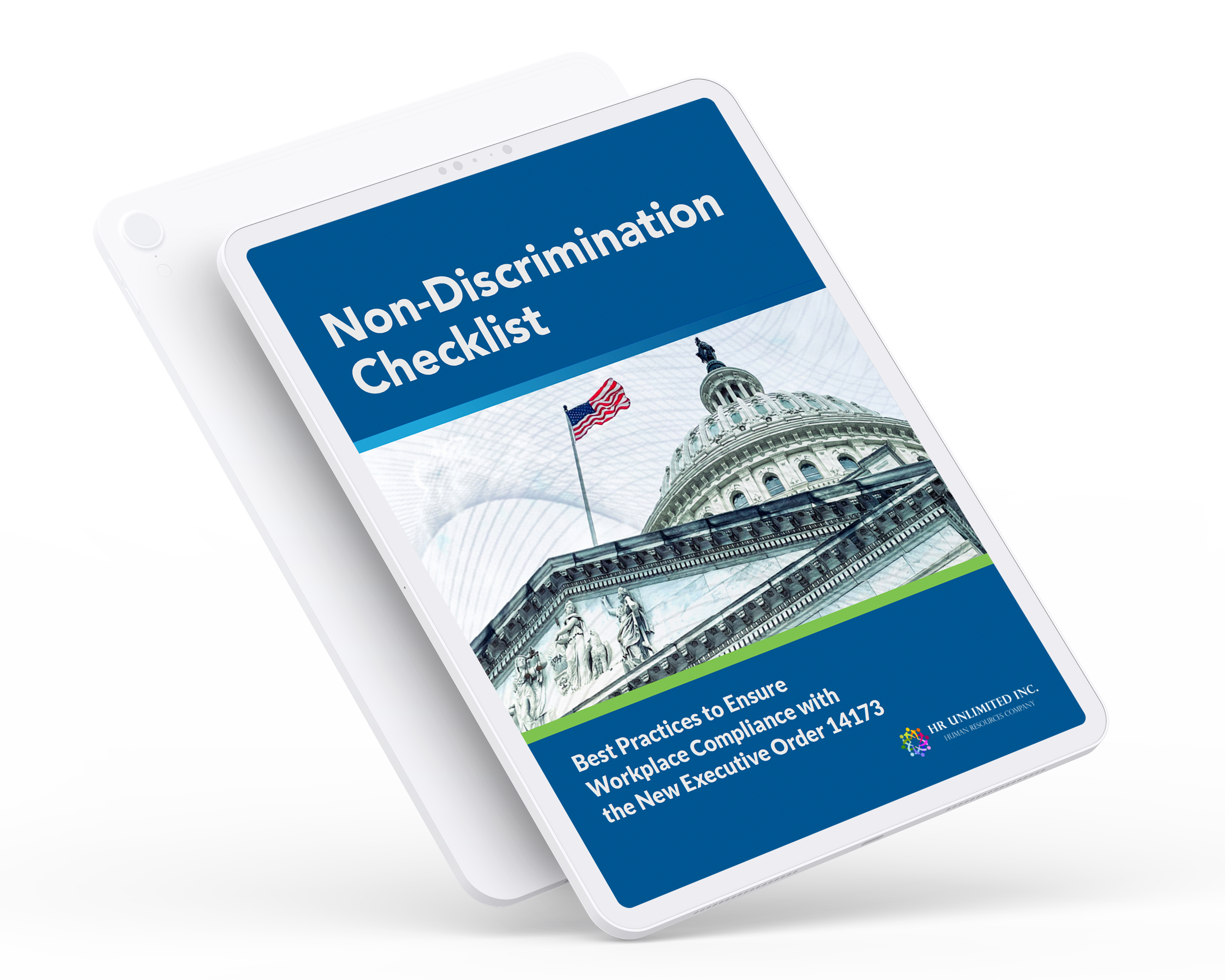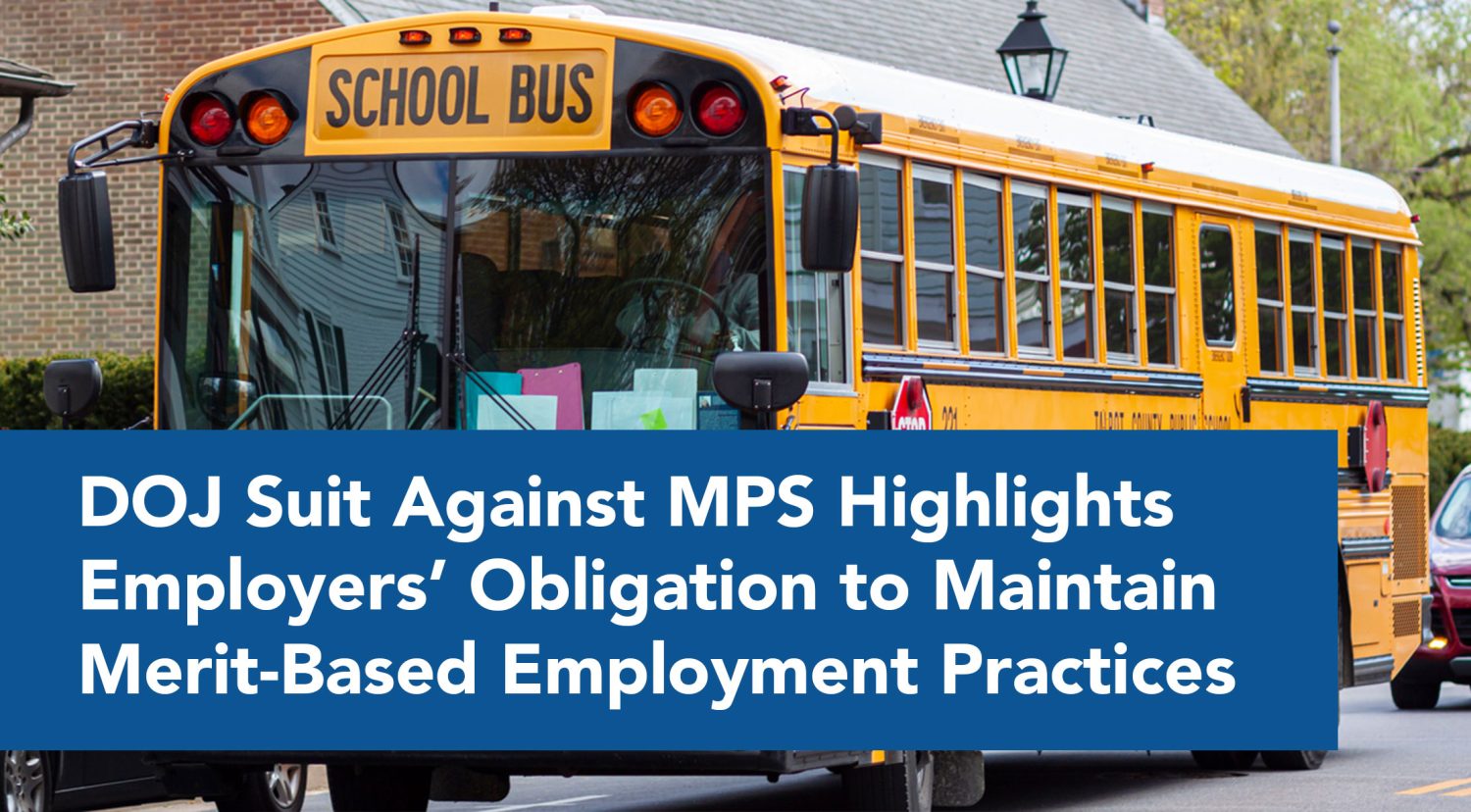

In today’s workplace, diversity, equity, and inclusion (DEI) are more than values — they are business imperatives. Under Executive Order 14173, federal contractors and subcontractors are required to analyze their employment practices and certify that their workplaces are free from discrimination. One of the most effective ways to meet these obligations and advance workplace fairness is through an annual workforce statistical analysis. By systematically examining workforce data through the lens of race and sex, employers can detect patterns of discrimination, correct disparities, and build a more inclusive culture backed by evidence.
Why It Matters
Discrimination in employment can be subtle, systemic, and difficult to detect without data. While employers may have non-discriminatory policies in place, actual outcomes often reveal a different story. Disparities in hiring, promotions, terminations, and pay are frequently uncovered only through rigorous statistical analysis. Relying solely on anecdotal evidence or general impressions can mask serious issues and expose organizations to noncompliance with EO 14173, legal liability, and reputational harm. Annual statistical reviews can help employers:
- Identify disparities in workforce outcomes by race and sex
- Detect potential adverse impact in employment decisions
- Evaluate the effectiveness of DEI programs
- Comply with EO 14173, Title VII of the Civil Rights Act, and federal contractor requirements
Key Analytical Tools
Several well-established statistical techniques are used to evaluate discrimination:
- Adverse Impact Analysis (Four-Fifths Rule): Compares selection rates between groups. If a protected group’s selection rate is less than 80% of the highest group’s rate, adverse impact is indicated.
- Standard Deviation Tests: Measures whether observed differences are statistically significant.
- Regression Analysis: Controls for legitimate business variables to determine whether race or sex still predict outcomes.
- Cohort and Comparative Analyses: Examine whether similarly qualified individuals are treated differently.
These tools allow employers to move beyond surface-level assessments and determine whether disparities are explainable or indicative of systemic bias.
Legal Precedents Supporting Statistical Analysis
The importance of statistical analysis in identifying discrimination is well-established in U.S. case law: Griggs v. Duke Power Co. (1971) – U.S. Supreme Court
- Issue: Disparate impact based on race (testing & diploma requirements).
- Statistical Role: Statistics showed that Black applicants were disproportionately excluded by the company’s employment tests, despite no relation to job performance.
- Significance: Created the disparate impact theory under Title VII — employer practices that are neutral on their face but discriminatory in effect can still be unlawful.
Hazelwood School District v. United States (1977) – U.S. Supreme Court
- Issue: Racial discrimination in hiring teachers.
- Statistical Role: The Court compared the percentage of Black teachers in the district to the percentage of qualified Black teachers in the relevant labor market.
- Outcome: A statistically significant underrepresentation supported an inference of discrimination.
- Key Quote: “Where gross statistical disparities can be shown, they alone may in a proper case constitute prima facie proof of a pattern or practice of discrimination.”
Teamsters v. United States (1977) – U.S. Supreme Court
- Issue: Systemic discrimination in hiring and promotion of minority workers.
- Statistical Role: The DOJ showed a significant underrepresentation of minorities in line-driver positions relative to the available labor pool.
- Significance: The Court held that statistics can be used to establish a pattern or practice of discrimination, especially when showing systemic disparities.
Wards Cove Packing Co. v. Atonio (1989) – U.S. Supreme Court
- Issue: Alleged disparate impact against nonwhite workers in cannery vs. skilled jobs.
- Statistical Role: Plaintiffs used statistics to show minority workers were mostly in lower-tier jobs.
- Significance: The Court raised the burden on plaintiffs to identify the specific employment practice and to use proper comparison groups. This was later modified by the Civil Rights Act of 1991 to ease plaintiff burdens again.
Bazemore v. Friday (1986) – U.S. Supreme Court
- Issue: Pay discrimination against Black employees.
- Statistical Role: Multiple regression analysis showed unexplained pay gaps even after controlling relevant factors.
- Significance: The Court ruled statistical models that omit some variables can still be admissible and persuasive, especially when those variables are not shown to be important.
Dukes v. Wal-Mart Stores, Inc. (2011) – U.S. Supreme Court
- Issue: Gender discrimination in pay and promotion (nationwide class action).
- Statistical Role: Plaintiffs introduced regression analyses showing gender-based disparities across thousands of stores.
- Outcome: The Court did not reject the statistical evidence but held that plaintiffs did not show enough commonality for a nationwide class.
- Lesson: Regression is key but must be tightly linked to the employment practice and group.
These decisions confirm that courts accept and rely on statistical evidence to reveal and evaluate workplace discrimination, the same methodology encouraged under EO 14173.
Legal and Compliance Benefits
Under Executive Order 14173, Advancing Pay Equity and Equal Opportunity in the Federal Workforce and Among Federal Contractors, federal contractors must conduct an annual Employment Practices Audit (EPA) and certify the absence of workplace discrimination. The Office of Federal Contract Compliance Programs (OFCCP) and the Equal Employment Opportunity Commission (EEOC) both rely heavily on statistical analyses to enforce anti-discrimination laws. Employers who proactively conduct their own annual analyses are better equipped to:
- Detect and remedy disparities before they lead to complaints or investigations
- Demonstrate good faith efforts toward nondiscrimination and DEI
- Defend employment practices with credible, data-backed evidence
- Maintain compliance with EO 14173 certification requirements
Strategic Value for DEI
Annual workforce analysis also strengthens DEI programs by providing:
- Baseline metrics to track progress
- Insights to guide targeted interventions
- Evidence of organizational commitment to equity
Without data and measurability, DEI initiatives may be well-intentioned but ineffective. With data, they become strategic, accountable, and transparent.
Conclusion
Workforce statistical analysis is not just a compliance exercise, it’s a business and ethical imperative. Employers that conduct annual reviews position themselves as leaders in equity, protect against legal risk, and build a workplace where fairness isn’t just promised, it’s proven. In the evolving landscape of workplace equity and the regulatory framework of EO 14173, data is not just useful. It’s essential.
The enforcement of Executive Order 14173 is transforming compliance requirements for federal contractors. Join us on April 30, 2025, at 10:30 AM PST for an exclusive virtual roundtable led by government officials for clear, actionable guidance to navigate the evolving regulatory landscape confidently.
Have questions about what your organization should do next? Our compliance experts are here to help you adjust, prepare, and protect your organization under EO 14173.




